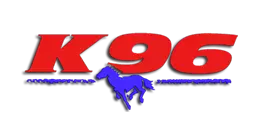
Montana Red Cross Advices Caution as Rapid Snow Melt and Ice Jams Increase Probability of Flash Flooding
Bozeman, March 12, 2014—The American Red Cross ofMontana has important tips to protect you and your family from the dangers of flash flooding.
Floods are among the most frequent and costly natural disasters in the United Statesand they can happen in almost any community. Flooding can result from prolonged rainfall over several days or intense rainfall over a short period of time. In Montana, floods are often caused by ice jams. Flash floods can occur within six hours of a significant rain event, after a dam or levee fails, or when snow and ice melt at a rapid pace. Flash floods can catch people unprepared, with little or no warning, and they can be deadly.
Ice jams in rivers and stream are of special concern inMontanaright now. They can cause problems both upstream or downstream from a bottleneck: (1) water can start accumulating behind an ice jam, causing flooding upstream from the blockage, and (2) flash flooding can occur downstream when an ice jam suddenly gives way and the accumulated water is released all at once.
“Please use extreme caution in flood-prone areas when ice jams are either occurring or breaking up,” urges Colleen Tone, Disaster and Program Officer for American Red Cross of Montana. “The most important thing to remember is to move to higher ground immediately when local officials issue a flash flood warning”.
Here are a few additional tips to prepare for flooding your community:
Make a plan: Talk to everyone in your household about what to do if a flood occurs.
Tune in to your local radio and TV stations for the latest updates in your area: A flood WATCH means flooding or flash flooding is possible in your area. A food WARNING means flooding or flash flooding is already occurring or will occur very soon in your area. When a flood or flash flood warning is issued in your community, head for higher ground and stay there.
Stay away from flood waters: If you come upon a flooded area, stop, turn around and go another way. If you are caught on a flooded road and waters are rising rapidly around you, get out of the car quickly and move to higher ground.
Assemble a flood preparedness kit: You’ll be better prepared to withstand a flood if you have a kit that is packed and ready to go when you need to evacuate. For a detailed list of items to include in your kit, go to http://www.redcross.org/prepare/disaster/flood.
“This is a good time to remind Montanans that the Red Cross relies on their donations to help people recover from disasters such as floods,” adds Tone. “Cash donations allow us to purchase the large quantities of goods that are often needed after a disaster. They also make it possible for us to assist disaster victims with specific emergency needs, such as shelter, food, lost medications, and many other items.”
You can help people affected by disasters like floods, as well as countless other crises at home and around the world, by making a donation to support American Red Cross Disaster Relief. Your gift enables the Red Cross to prepare for and provide shelter, food, emotional support and other assistance in response to disasters. Visit www.redcross.org/montana or call 1-800-ARC-MONT (1-800-272-6668). Contributions may also be sent to American Red Cross of Montana, 1300 28th Street South,Great Falls,MT59405.
About the American Red Cross:
The American Red Cross shelters, feeds and provides emotional support to victims of disasters; supplies about 40 percent of the nation's blood; teaches skills that save lives; provides international humanitarian aid; and supports military members and their families. The Red Cross is a not-for-profit organization that depends on volunteers and the generosity of the American public to perform its mission. For more information, please visit redcross.org or visit us on Twitter at @RedCross.
More From K96 FM









